The Race For Number One: Dominic Thiem's ultimate incline to scale
By Matt Fitzgerald May 18, 2020Rafael Nadal to be honored with 'exceptional' tribute on opening day of Roland Garros
By Associated Press Apr 17, 2025French Open organizers introduce draw to access ticket sales
By Associated Press Jan 07, 2025Coaches Corner: Juan Carlos Ferrero proves essential to Carlos Alcaraz's Roland Garros success
By Steve Tignor Jun 14, 2024What’s next for Novak and Nadal? Four ATP storylines after the Paris fortnight
By Joel Drucker Jun 10, 2024Naomi’s resurgence, Iga on grass: Four WTA storylines after the Paris fortnight
By Joel Drucker Jun 10, 2024Carlos Alcaraz becomes the clay-court champion that he—and we—always knew was possible
By Steve Tignor Jun 09, 2024Coco Gauff wins first Grand Slam doubles title with Katerina Siniakova in dream team debut
By Matt Fitzgerald Jun 09, 2024Coco Gauff is a Grand Slam champion in singles and doubles, exceeding her own expectations
By Associated Press Jun 09, 2024From Rafa to Iga: as one owner of Roland Garros departs, a new one has moved in
By Steve Tignor Jun 08, 2024The Race For Number One: Dominic Thiem's ultimate incline to scale
He finished runner-up in his first three Grand Slam finals. Whenever, and wherever, the Austrian gets another opportunity to come in first, he’ll cherish the moment, and remember his journey.
Published May 18, 2020
Advertising
It’s not uncommon for the streets of Santa Monica to be bustling with action. An inviting sky compels locals and tourists to unite in admiring postcard-perfect views, all while getting in a workout of choice. Cars move at a leisurely pace, though on this Friday afternoon, traffic is slower than usual alongside—and inside—the city’s California Incline, the famous slanted road with stunning coastal scenery and a demanding uphill grade.
Onlookers hit their brakes, realizing one man putting down work isn’t a jogger they’ve passed before. Running at a brisk pace, he mixes in spread eagles, leg lifts and uphill facing sit-ups in-between intervals. At one point, a protective regular shouts, “You can’t do this on the bike path!”—except, he is uninformed that can’t is nowhere to be found in Dominic Thiem’s vocabulary.
The 26-year-old soon takes a deep breath and sprints as far as he can without releasing it, pushing to reach an ever-shifting finish line. Today, two cones serve as a figurative point B, but a Grand Slam triumph is where Thiem’s ultimate incline ends.
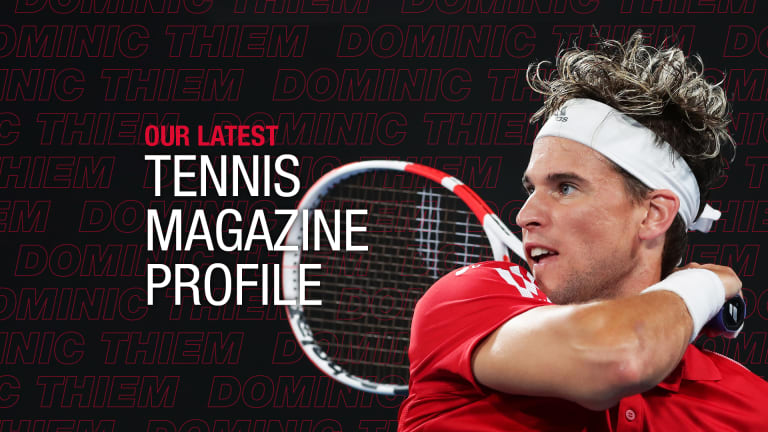
The Race For Number One: Dominic Thiem's ultimate incline to scale
Advertising
Never concerned with timelines, Thiem has emerged as a perennial contender on his own terms. In early March, the 16-time ATP titlist reached No. 3 in the rankings for the first time, overtaking Roger Federer.
In a chase boasting 12-time French Open champion Rafael Nadal, and the man who surpassed the Austrian late to cross the tape first at the Australian Open in February, Novak Djokovic, the pursuit will remain an uphill battle for the two-time Roland Garros runner-up. After knocking off three consecutive Top 10 opponents, including then-No. 1 Nadal, to reach a Grand Slam final on a different surface than clay—and holding a two-sets-to-one lead on Djokovic—Thiem left Melbourne Park with a much superior outlook to his Roland Garros shortcomings.
“I’ve got more and more experience and raised my own level,” Thiem says. “With every single match against these legends, you learn how it’s possible to beat them, even on the biggest stage. That’s what you need in every match against them.”
“In the two French Open finals, especially in the first one, I dropped my level. Last year, as well, I was playing great for two sets, but then I couldn’t keep it up. In Australia, I was keeping my level from the first to the last point in each of the matches. Even though it’s super disappointing in the end that I didn’t win the title, it still keeps me very positive for the future.”
Staying patient and yearning to evolve as an athlete are essential for Thiem, who finds himself competing during the most challenging era in ATP history. At the past 13 majors, Djokovic, Nadal and Roger Federer have won every piece of hardware. A player born in the 1990s has yet to taste victory on the Grand Slam stage, though outside of the aforementioned Big Three, Thiem has contested the most major finals during that period. It’s a testament to the grounded, conscientious competitor who has trusted in progressing at his own pace.
“He didn’t make this unbelievably big step, [like winning] a junior Grand Slam at 15 or 16, or already [being in] the Top 10 at 18 or 19,” says father Wolfgang, who along with wife Karin took up coaching to make a living for their family. “It always went up slowly, but always went up. I think in the end, this was a good advantage. We had the opportunity to get all these experiences in a slower way.”
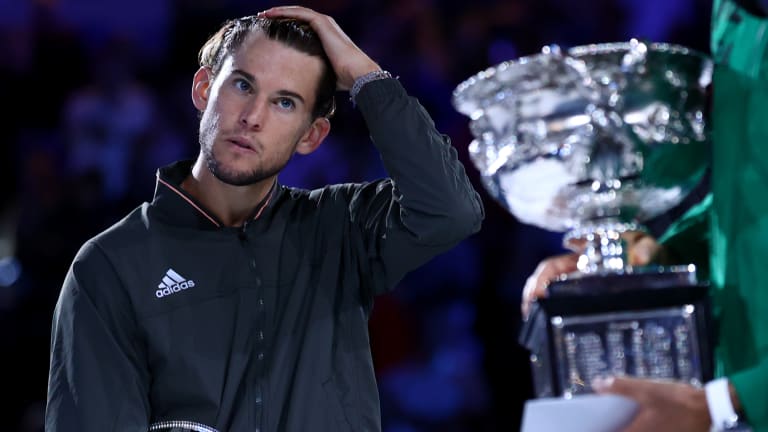
The Race For Number One: Dominic Thiem's ultimate incline to scale
© Getty Images
Advertising
After his final-round loss to Djokovic at the 2020 Australian Open, Thiem spoke about the personal fulfillment he would attain if able to claim a major during the current climate. “I‘m happy I can compete with these guys on the best level. I really hope also that I win my maiden Slam when they’re still around, because it just counts more.” (Getty Images)
Ever since he was born, Thiem has always been on the move. As a small child, he kept his parents on their toes, showing an early affinity and concentration beyond his years for any sport involving a ball. On family ski trips, rest and time for lunch were not on Dominic’s order of play, only rides up the chair lift and runs down the mountain. Kid-friendly activities such as cartoons and Legos never piqued his interest, and it’s no secret that red dirt with chalk lines is where Wolfgang’s eldest son feels most at home.
From the time he started playing tennis until his late teens, the Wiener Neustadt native estimates that 90 percent of his court time was spent on red clay. Possessing a natural understanding of how and when to slide has helped on tour, yet it’s Thiem’s developed weight of shot that has seen him emerge as the best clay-courter born in the 1990s.
“When facing him, Dominic is like the second guy next to Rafa on clay in terms of when he’s on,” says Dusan Lajovic, who has crossed paths with Thiem during each European clay-court season from 2015 through 2019. “He’s very difficult to play. He’s improved so much over the years and become one of the contenders for each Grand Slam.
“If you don’t counterattack that topspin in the right way,” the Serbian explained. “He’s throwing you off the court more and more. It’s tough to get out of that situation. You need to think how to go first and not be in the defensive position from the beginning of the point. I can see that I have the potential to play with him, but his consistency is really on another level. This is a goal to reach and a way to improve.”
The journey to becoming a jaw-dropping ball-striker began with uncertainty when longtime former coach Gunter Bresnik switched Thiem to a one-handed backhand. It required faith, and untold hours of practice, to polish a suitable return game. When he made the transition to the ATP tour, Thiem’s first Top 10 win came over Stan Wawrinka at 2014 Madrid, though he needed a set to process the strikes coming at him, having never faced such a force of nature.
“I remember this match very well,” says Thiem. “I didn’t even have a practice with him before and was blown off the court in the first set. Everything was way too fast for me, way too heavy. I got used to a little bit better in the second and third set.
“Even though I beat him, it was still unbelievable motivation to develop my shots to his kind of level, as they are so fast and so heavy. I’m really happy that it finally became that way.”
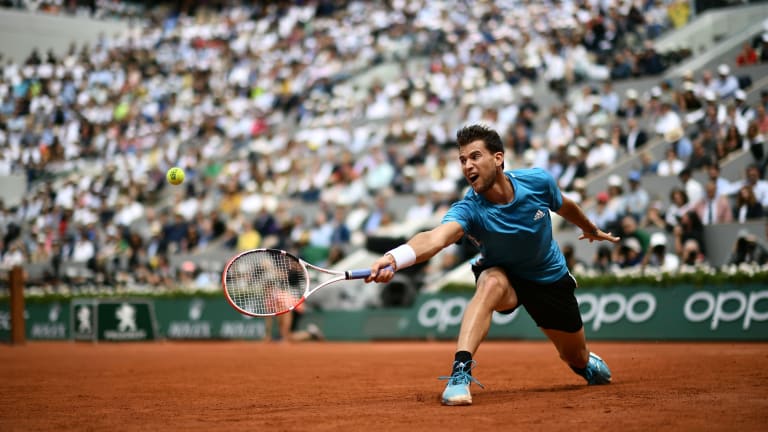
The Race For Number One: Dominic Thiem's ultimate incline to scale
© AFP via Getty Images
Advertising
Since the start of the 2018 season, Thiem has accumulated a 9–7 record against Djokovic, (3–2), Federer (3–1) and Nadal (3–4). Four of those victories have come away from his preferred surface, including two indoors at the 2019 ATP Finals. In London, Thiem topped Federer and Djokovic to win his round-robin group, and narrowly lost the title match in a decisive tiebreaker to Stefanos Tsitsipas. (Getty Images)
Navigating the season’s largest clay-court swing is another complex test Thiem has carefully studied. Early stops in Monte Carlo and Barcelona often produce slow balls, particularly when spring weather requires layering up. Conditions speed up in Madrid, which boasts altitude, and Rome, where it’s generally milder. Paris brings every extremity together: cold, warm, high-bouncing, slow, windy and rainy. But in March, players were thrown an unprecedented curveball.
In response to an uncertain future the coronavirus outbreak has left the world to face, the French Tennis Federation pushed the start of Roland Garros back to September 20—one week after the US Open, played on hard courts, is scheduled to end. A day after this decision came out, the ATP and WTA jointly announced there would be no spring clay-court tournaments in 2020. (the FFT later shifted the clay-court major back another week in early May)
During his past three lead-up trips to the French capital, Thiem had the benefit of collecting a win on clay over Nadal. But in every rematch at Roland Garros, the Spaniard went on to foil Thiem, winning nine of 10 sets played in a best-of-five-set format that has proven over time to be the sport’s most daunting ask.
“What I’ve experienced is that it’s way tougher to play him on Philippe Chatrier because it’s just like his living room,” describes Thiem. “The court is so big at one point in the match, you lose the belief that you can win the match, or that you can hit winners, because he’s just playing his best tennis always on the court. There’s a reason he’s only lost two matches there.”
While Thiem left Paris without the trophy he coveted in 2019, it was a year the well-liked contender began to exercise his voice, off the court and on. He publicly backed 4ocean, an organization which has eradicated more than four million pounds of plastic pollution to protect marine wildlife. In Rome, Thiem declared his frustration with the way organizers handled a washout and subsequent scheduling. At the French Open, when officials wanted to move him mid-press conference to another interview room, Thiem expressed his displeasure. This all followed his delicate decision to part ways with Bresnik in favor of a new perspective, Nicolas Massu.
The Chilean and his new pupil hit it off immediately, as Thiem captured his first ATP Masters 1000 trophy at Indian Wells in their first tournament together. With Massu by his side, fostering a “free-range” approach, Thiem’s racquet never spoke louder in claiming five titles—three on hard courts—to silence any previous detractors who dubbed him a one-dimensional player.
“The combination works perfect,” says Wolfgang. “Dominic is now able to develop his game on his own. “He is a sensitive player. He needs to feel the ball. If everything starts to get too mechanical and he loses his feeling, he drops. Nico [has] given him this opportunity to find his own ways. I think this is one of the secrets [why] it works really good.”
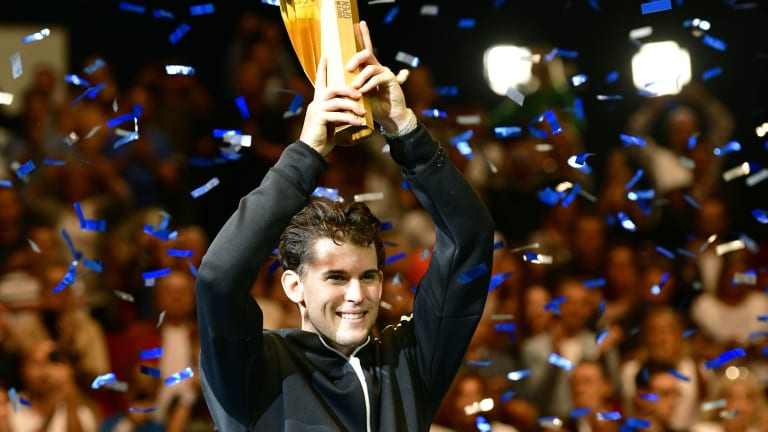
The Race For Number One: Dominic Thiem's ultimate incline to scale
© APA/AFP via Getty Images
Advertising
Three of Thiem's five titles in 2019 came on hard courts, including indoors on home soil in Vienna. (Getty Images)
Achieving excellent chemistry is crucial for any team dynamic with the amount of time tennis players and their support systems spend together. For Thiem, the addition of Massu has been a seamless transition and, more significantly, allowed him to explore the full scope of his capabilities.
“I improved my whole game a lot in the last year. My volleys, my serve, return, which are very important, especially for the faster surfaces,” says Thiem. “With better results, indoors, toward the end of the season, my confidence grew bigger and bigger.”
This enhanced self-assurance was on full display at Melbourne Park, where he upstaged Nadal in the quarterfinals. In that taxing four-set tussle, Thiem blinked when he first served for the match in the fourth set, but all night long, he maintained conviction in his shots to outslug the left-hander. Should he get a fourth consecutive crack against Nadal at the French Open, the Austrian would bring a major win over the 19-time Slam champion to the table for the first time.
“I hope to give myself another chance to play him. If I step on that court against him again, I have to believe it,” he says. “I have to transfer the good things which I made against him already and the matches on clay where I beat him even better in Paris.”
Whether 2020—or the following season if tour tennis does not resume until then—is the year Thiem summits the top of the incline at a major is a question many are breathlessly waiting to be answered. No matter where he plays, and no matter when that next takes place, Thiem will continue to stop traffic with his talent, temperament and thirst for more.
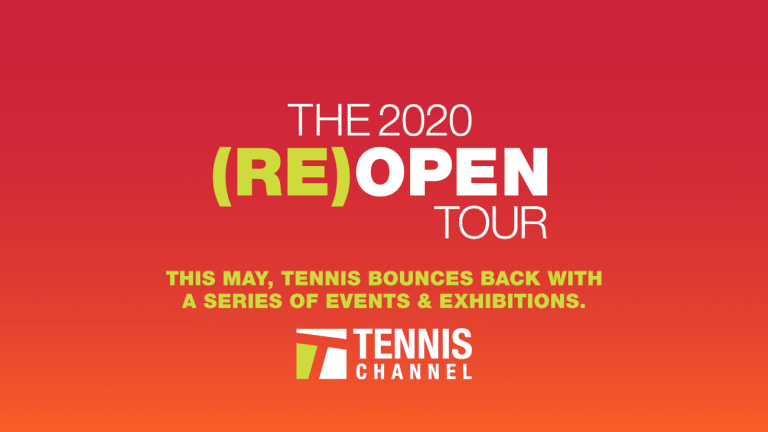
The Race For Number One: Dominic Thiem's ultimate incline to scale